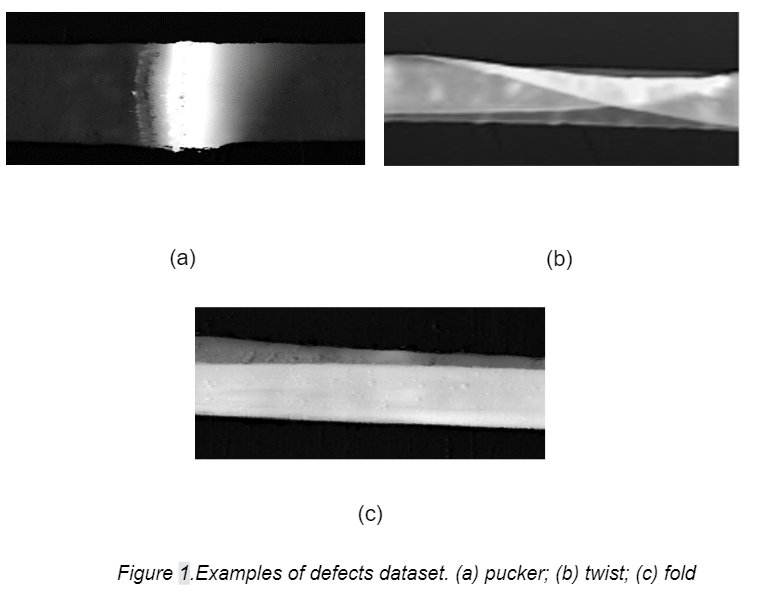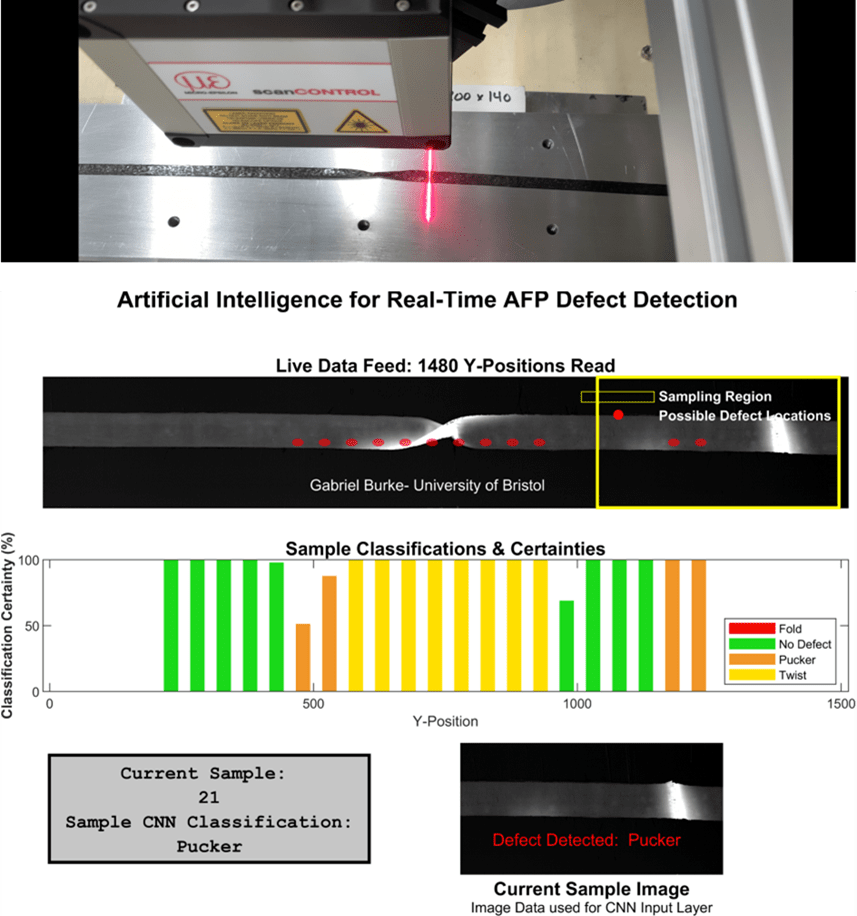by Gabriel Burke, Duc H. Nguyen, Iryna Tretiak.
The growing demand for ever more cost and labour effective production of large, lightweight, and geometrically complex composite structures has led to the replacement of traditional manufacturing processes, such as hand lay-up and vacuum bagging, with automated processes such and Automated Fibre Placement (AFP). The AFP method uses robotic arms to deposit layers of carbon fibre reinforced composites (CFRP) onto bespoke moulds. This process can create complex shapes at high speed. However, manufacturing-induced defects are inevitable during AFP. This degrades the strength of the final parts and creates a major waste problem, with defective parts discarded in some cases. While automation of composite manufacturing processes has been successfully industrialised, inspection is still largely a manual process.
As we move towards Industry 4.0, it is possible to optimise inspection during the AFP manufacturing process. One option of improving inspection is to implement artificial intelligence.
Our research team at the Bristol Composites Institute (BCI) has successfully designed and implemented a system that performs real-time defect detection and classification during the AFP process, providing information on the location and type of defects in the tape almost instantly after it has occurred.
The developed system is built upon a convolutional neural network (CNN), which uses deep learning techniques to detect defects based on input data images. These images were generated using data collected from a Micro-Epsilon profilometry sensor attached to the AFP gantry. This system can correctly identify and differentiate between three defects (fold, twist, and pucker) and does so in real-time using a three-stage algorithm:
1. Live data collection and pre-processing;
2. A sampling and image optimisation algorithm to produce a moving window of input images for the CNN;
3. Defect detection/classification using the CNN.
Due to this modular design, it is possible to modify each stage to fit the needs of other AFP applications. For example, the CNN can be retrained to ‘look’ for other defects, or the sampler could be modified to collect images at a different frequency based on the scale of the part being manufactured.
This novel inspection technique provides great potential to improve efficiency and reduce waste in composites manufacturing.

Following the success of the initial proof-of-concept phase, the team is looking to upscale the current prototype to meet the speed and robustness requirements of operational systems in industry.

